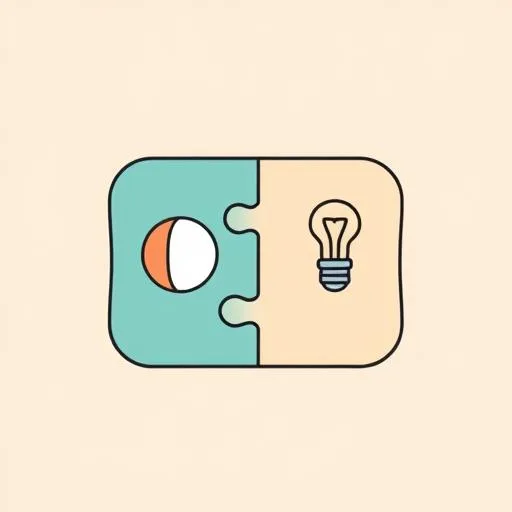
That moment when your little one points at clouds and whispers ‘dragon!’—pure imagination at work. But what about the imagination woven into the technology they’ll inherit? Turns out, there’s a whole world of quiet human effort shaping today’s AI—the kind that reminds me of labeling family photos just so we can relive laughter later. Wall Street’s recently taken note too, with firms quietly betting on companies doing this essential work for AI data annotation and parenting insights.
How Does Data Annotation Power Play for Kids?

Remember sorting puzzle pieces with your child? ‘This flat edge connects,’ you say, helping them spot patterns. That’s exactly how data annotation fuels AI—except imagine doing it for millions of cat photos, medical scans, or sarcastic tweets across 85 languages. Firms like Innodata spend decades building this quiet backbone: humans labeling nuances machines can’t grasp alone. Why does it matter for bedtime stories? Because when AI learns ‘moon’ isn’t just a rock but ‘Mommy’s nightlight,’ it’s closer to understanding your child’s wonder.
Think of it as the unsung playground prep work. Just as we clear sticks from the sandbox to keep play safe, annotators scrub data for biases —ensuring ‘princess’ doesn’t only mean ‘pink dress,’ but also ‘spacesuit’ or ‘hockey gear.’ It’s tedious magic: the reason your voice assistant knows ‘time for bed’ means cuddles, not just clock numbers. This human touch in AI data annotation is what makes technology resonate with our kids’ experiences.
Why Is AI Data Annotation Booming for Parenting?

You’ve probably noticed how fast kids pick up new games—that’s generative AI in action! But here’s what’s flying under the radar: the market for teaching these tools is exploding toward $12 billion. Why? Because real learning needs context. When your child draws a ‘happy tree’ with sad rain, they’re mixing emotions English lacks words for. AI needs that depth too—and humans provide it.
Picture a global team labeling hospital notes in Mumbai, self-driving car footage in Detroit, and grandma’s handwritten recipes in Seoul. That’s Innodata’s world. They’re not selling flash drives; they’re the quiet guides helping AI distinguish ‘ouch’ (stumble) from ‘ouch!’ (pain). For parents, this whispers an important truth: technology advances fastest when it honors human nuance—the same nuance we nurture when we ask ‘How did that make you feel?’ It’s a key part of AI data annotation and parenting strategies.
Parenting Parallel: We’re All Data Trainers for AI

Here’s where it gets personal. Every time you say ‘Use gentle hands,’ you’re annotating life for your child—teaching texture beyond ‘soft’ or ‘hard.’ Similarly, Innodata’s growth shows investors recognizing that AI requires this human layer to be trustworthy. It’s why their recent revenue jumped 120%: companies know AI without human guidance trips over its own feet.
That park bench conversation where you explain why ‘I’m bored’ calls for a walk, not a screen? That’s the annotation we model. Machines can’t yet grasp that ‘bored’ might mean ‘I need you,’ which is why no app replaces your presence. Our role isn’t to fear AI but to keep teaching what it cannot learn alone: the weight behind a whispered ‘sorry,’ the joy in a messy hug. This human element in AI data annotation is vital for nurturing kids.
Three Seeds for Nurturing AI-Native Kids with Data Annotation Insights

So how do we help our little ones grow roots in this changing world? Let’s plant seeds together:
1. Cultivate ‘Why?’ not ‘What?’ When Siri answers ‘How old is the moon?,’ pause. ‘What questions would YOU ask it?’ Celebrate their wild answers—that’s critical thinking no dataset can replicate.
2. Play ‘Real-World Annotation’ During walks, point: ‘That cloud looks angry—let’s name feelings for three things we see.’ Sorting pinecones by size teaches pattern recognition better than any app. (Pro tip: Save the quirkiest rock for rainy-day storytelling!)
3. Champion ‘Slow Moments’ Notice how your child studies ants for 20 minutes? Protect that focus. AI processes instantly; our gift is teaching patience—that some answers, like why dandelions turn into wishes, need quiet observation.
These aren’t anti-tech tricks. They’re armor for a world where machines understand ‘find ice cream’ but not ‘I need comfort.’ Integrating AI data annotation principles into parenting can foster a balanced, curious mindset in kids.
As highlighted in recent insights from ETF Daily News: Ieq Capital LLC Buys Shares of 6,423 Innodata Inc. $INOD, the quiet yet crucial work behind AI continues to attract major attention—and rightly so, as it shapes not just algorithms, but the fabric of how our children will interact with tech tomorrow.
